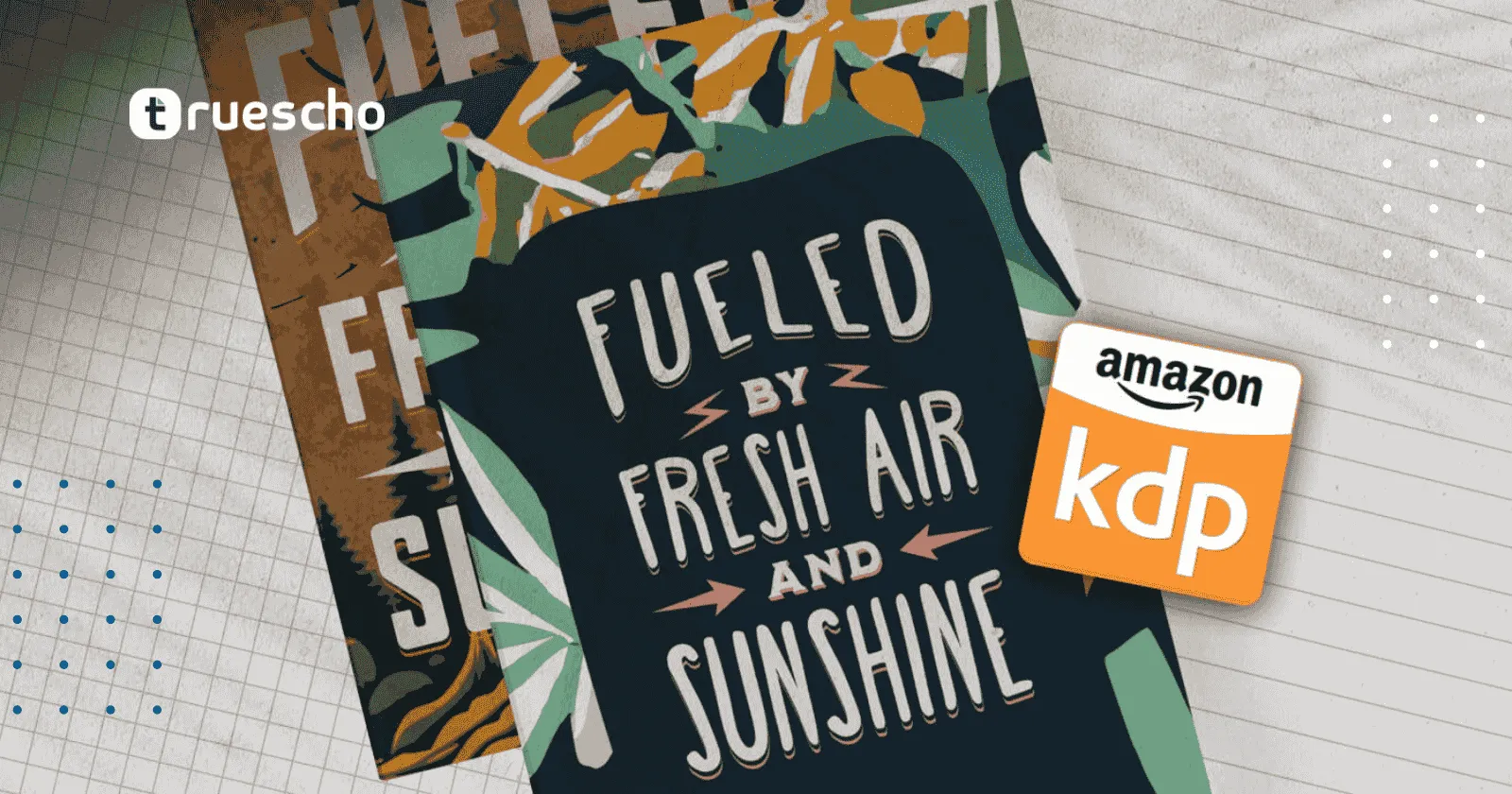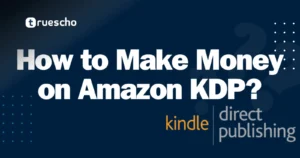Amazon KDP Success Story: $2.4M Publishing Case Study
Table of Contents
- The Beginnings: A Journey from Humble Roots
- Early Struggles and Lessons Learned
- Key Lessons from the Early Phase
- Transitioning from DIY to Scalable Business Practices
- From Modest Earnings to a $2.4M Revenue Stream
- Building a Team and Streamlining Operations
- Leveraging Timing & Seasonal Ad Strategies
- The Power of High Content: Creating a Moat Against Competitors
- Tips for Your Own Amazon KDP Journey
- Conclusion
The Beginnings: A Journey from Humble Roots
The journey began with a full-time job in Bangalore, India, where earnings were as modest as $150 per month. With little disposable income but a strong desire to succeed, the early days of this Amazon KDP venture were defined by relentless determination and hands-on learning. In the initial years, every aspect—from writing to cover design—was handled personally. This grassroots approach laid the groundwork for understanding the nuances of self-publishing.
At the time, many pioneers in the industry, like Stephan James, were paving the way and inspiring new entrants. The case study interview highlights how early influences and self-education played a pivotal role in sparking interest in Amazon KDP. As one mentor noted:
These early lessons in self-reliance and learning by doing set the stage for the evolution from simply producing books to moving toward a comprehensive publishing business model.
Early Struggles and Lessons Learned
The initial experiments involved personal involvement in writing and design. With limited funds, the creator produced the very first 50-page book—a tactic initially inspired by early practices in the industry. However, the first attempt did not yield the expected returns. The shortcoming was not a lack of ambition; rather, it stemmed from a realization that high-quality content demands more than just putting words on paper.
The subsequent attempt involved a 100-page book. Yet, results remained below expectations. It became clear that simply increasing the page count was not enough. The journey was marked by repeated experiments, modifications, and failures that ultimately served as valuable lessons.
Key Lessons from the Early Phase
- Quality Trumps Quantity: A 50-page book, no matter how ambitious, needs engaging content and proper packaging to be successful.
- Feedback is Invaluable: Gathering input from community groups and readers led to refining the product and making necessary improvements.
- Resilience: Each failure provided actionable insights and helped in gradually building a brand that stands out in the competitive Amazon KDP marketplace.
This phase of the journey underscored that success in Amazon KDP is not immediate. It requires consistent effort, adaptation, and a willingness to invest both time and money when possible.
Transitioning from DIY to Scalable Business Practices
As experience grew, so did the ambition to move beyond the all-hands-on-deck method. The transition phase involved outsourcing tasks where possible. Instead of personally writing every book or designing every cover, the business began to invest money in professional services. For example, designer freelancers were hired for cover art and experienced writers were engaged for content creation.
With modest monthly earnings reinvested back into the business, the shift from writing every single book to planning and managing projects allowed for scaling operations effectively. The breakthrough came when the publisher released the fourth book—an effort that combined years of learning and improvement—which turned the tide dramatically.
Tip: For readers and aspiring self-publishers, always consider investing in your team’s expertise once you start generating revenue. Even a small investment in professional writing or design can significantly enhance the perceived quality of your content.
When determining whether to invest money or time, remember that your choice should be guided by long-term growth objectives. Early on, creative problem-solving can overcome financial constraints, but transitioning to outsourcing is essential when scaling the business.
Read also: NASA astronauts return from long Space Station stay
From Modest Earnings to a $2.4M Revenue Stream
The turning point in this Amazon KDP Success Story came when a carefully refined publication strategy started to yield significant profits. The breakthrough success of the fourth book was not an isolated incident but a result of cumulative improvement over several titles. During the crucial holiday season—when organic search results and seasonal ad campaigns align—the book generated approximately $1,000 in sales, setting off an upward spiral.
Once the first breakthrough was achieved, subsequent books benefited from well-designed brand aesthetics and a growing email list. The steady momentum was maintained by leveraging the early success to build credibility and to attract repeat readers. As the portfolio expanded, the overall monthly royalties skyrocketed. At its peak, the business was generating around $40,000 per month in royalties during off-peak seasons, with a boost into the $92,000 range during peak season months.
Tip: Use seasonal trends to your advantage. Launching new titles in November to coincide with the holiday rush can lead to significant spikes in revenue. Explore strategies like targeted email marketing and paid ad budgets during peak seasons.
For more detailed guidance on leveraging seasonal trends for advertising, refer to Amazon’s official guide on advertising best practices available at https://advertising.amazon.com.

Building a Team and Streamlining Operations
As the business matured, streamlining operational processes became crucial for sustained growth. With increasing revenues from book sales, the decision was taken to build a small team dedicated to the daily management of the Amazon KDP business. The approach was methodical:
- Content Management: A full-time content manager was appointed to work directly on writing, editing, and coordinating freelance efforts.
- Outsourcing Tasks: Professional freelancers were hired to design high-quality book covers and manage detailed content reviews.
- Operational Strategy: Regular meetings and planning sessions ensured that fresh ideas were discussed, books were planned a year in advance, and quality control remained paramount.
The focus on team-building allowed the publisher to optimize time, concentrate on strategy rather than day-to-day tasks, and maintain a consistent production schedule. This division of labor not only improved product quality but also helped manage shifting priorities, like investing in a clothing brand or running an Amazon ad agency.
Quote: “When you have a dedicated team, your best ideas can take flight and free you up to focus on the bigger picture.”
Read also: NA10 MCP Agent Update
Leveraging Timing & Seasonal Ad Strategies
One of the most enlightening aspects of the case study was the revelation of strategically deploying advertising budgets in anticipation of seasonal trends. Planning for Q4 required a timely approach – launching books well in advance by September allowed sufficient time for organic buildup before boosting ad campaigns for Black Friday and Christmas.
The ad strategy was twofold:
- Targeted Ad Spend: Recognize which keywords were driving traffic organically, then invest further in those same avenues to maximize reach.
- Broad Experimentation: During high-traffic times, such as the Christmas season, a broader approach was adopted to test additional markets. Even if conversion rates were lower outside the core niche, the high volume of traffic compensated for it.
This adaptive method demonstrates that successful Amazon KDP entrepreneurs are constantly analyzing data, adjusting budgets, and responding flexibly to market conditions. For further details on optimizing your ad spend, you can refer to Amazon’s paid ads resource page at https://advertising.amazon.com/resources.
The Power of High Content: Creating a Moat Against Competitors
Unlike low- or medium-content books that are easier to replicate, this success story emphasizes a commitment to high content quality. The creator chose to build a niche around super high content books that include in-depth text, images, diagrams, and bonus materials. This approach, although time-intensive, created a strong competitive moat.
High content books are not only more valuable to readers, but the extra effort required discourages copycats. This competitive edge provides longevity to the brand while assuring readers of consistent quality. As a reflection of this strategy:
- Low Competition: Few are willing to invest the thousands of dollars and hundreds of hours into producing high-caliber content, thus reducing competition.
- Brand Strength: Each quality release reinforces the brand’s reputation in the marketplace, resulting in sustained high rankings and consistent royalties over the years.
This principle underpins the philosophy that quality investments in content creation pay dividends in the long run.
Tips for Your Own Amazon KDP Journey
Drawing from the lessons learned in this Publishing Case Study Interview, here are actionable tips that you can implement to boost your own Amazon KDP efforts:
- Invest Time and/or Money Wisely: If your budget is constrained, focus on doing more yourself and learning from the process. Once revenue increases, outsource tasks to improve quality and save time.
- Gather and Act on Feedback: Use reader and community feedback as a stepping stone for improvement. Regularly review and update your product strategy.
- Plan Ahead: Develop a yearly content plan in collaboration with your team. Organizing titles, covers, and advertising strategies well in advance ensures you are prepared for seasonal surges.
- Leverage Seasonal Trends: Align book launches and ad spending with seasonal high-traffic periods to maximize visibility and sales.
- Create a Distinctive Brand Identity: High content quality and consistent branding help establish loyal readership and fend off competition.
Remember, success rarely happens overnight. Embrace challenges, learn from every setback, and continuously evolve your strategy.
Conclusion
The inspiring journey captured within this Amazon KDP Success Story and Publishing Case Study Interview showcases the transformational power of persistence, constant learning, and strategic execution. Starting with a modest income of $150 per month and facing early failures head-on, the evolution into a multi-million dollar business is a testament to the dedication required to succeed in self-publishing.
By investing in quality, leveraging both organic and paid search strategies, and building a capable team, this case study serves as a blueprint for anyone looking to enter or scale their presence on Amazon KDP. For more self-publishing insights and formal guidelines on getting started, visit Amazon’s Kindle Direct Publishing official page at https://kdp.amazon.com/en_US/help/topic/G200635650.
Whether you are just beginning your journey or are ready to scale your self-publishing business, remember that resilience and a commitment to high-quality content can transform modest beginnings into enduring success.
Thank you for reading this in-depth analysis and for exploring the inspiring story behind one remarkable Amazon KDP journey.






